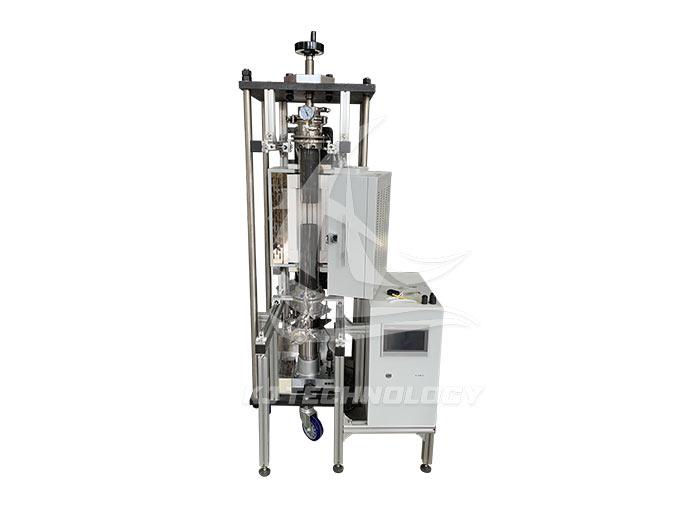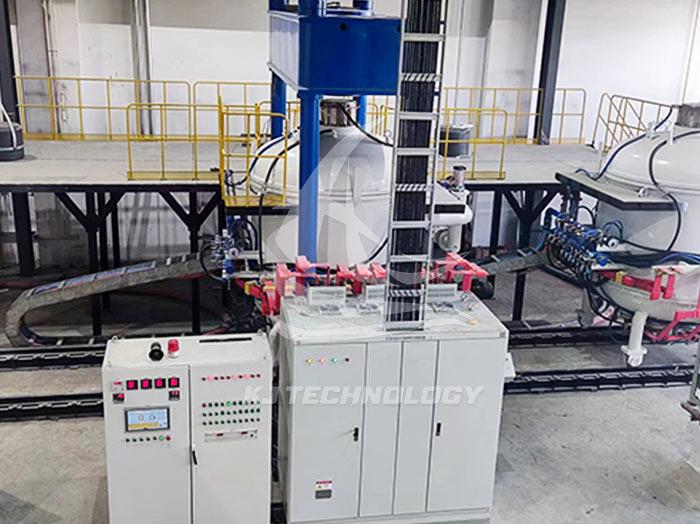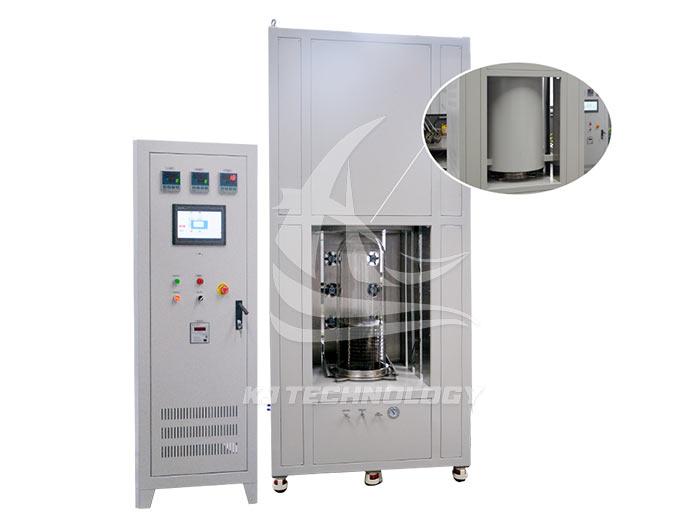Application of Vacuum Muffle Furnace in Aerospace Field
 08-04-2025 Author: KJ technology
08-04-2025 Author: KJ technology
hot pressing sintering,hot press sintering encyclopedia,hard alloy sintering,hard alloy hot pressing sintering,functional ceramic sintering,functional ceramic hot pressing sintering,powder metallurgy furnace,what furnace should be selected for hot pressing sintering,hot press sintering furnace,vacuum hot pressing sintering furnace:
1. Core material preparation: isolate oxidation and enhance intrinsic properties of materials
High temperature alloy sintering
Application scenario: Sintering of nickel based and cobalt based high-temperature alloys (such as single crystal turbine blade materials) should be carried out at temperatures above 1600 ℃, and oxidation should be avoided to prevent grain boundary embrittlement.
Technical advantages: The vacuum muffle furnace passes through a high vacuum environment of 10 ⁻⁴ Pa, completely isolating oxygen and preventing the oxidation and volatilization of alloy elements, resulting in a material density of over 99.5% and a 30% increase in grain boundary strength after sintering.
Preparation of Ceramic Matrix Composite Materials (CMC)
Application scenario: Silicon carbide fiber-reinforced silicon carbide ceramic matrix composites (SiC/SiC) need to be densified at high temperatures in an inert atmosphere (argon gas).
Technical advantages: The vacuum muffle furnace can be filled with high-purity argon gas (purity ≥ 99.999%), combined with a high temperature of 1800 ℃, reducing the porosity of the material from 15% to below 3%, and achieving a bending strength of 600MPa.
2. Precision heat treatment: optimizing microstructure and improving component performance
Titanium alloy vacuum annealing
Application scenario: Aircraft titanium alloy parts (such as landing gear and fasteners) need to be annealed to eliminate residual stresses from cold working and prevent surface oxidation.
Technical advantage: The vacuum muffle furnace is annealed at 800 ℃, and with a vacuum degree of 10 ⁻ Pa, the material's fatigue strength is increased by 25%, and the surface roughness is reduced from Ra3.2 μ m to Ra0.8 μ m.
Sintering of niobium alloy thrust chamber
Application scenario: The niobium alloy thrust chamber of rocket engines needs to be sintered under a vacuum of 10 ⁻⁵ Pa to avoid the reaction of niobium with oxygen to generate low melting point oxides (such as Nb ₂ O ₅, with a melting point of only 1512 ℃).
Technical advantages: The vacuum muffle furnace achieves ultra-low oxygen content (≤ 1ppm) through a molecular pump system, enabling the thrust chamber to withstand temperatures up to 2200 ℃, which is 300 ℃ higher than sintering in an air environment.
3. Extreme environment simulation testing: verifying material reliability
Aging test of thermal protection coating
Application scenario: When spacecraft re-enter the atmosphere, the thermal protection coating needs to withstand high temperatures above 2000 ℃ and oxidative gas erosion.
Technical advantage: The vacuum muffle furnace can simulate a low-pressure environment of 10 ⁻ Pa, combined with an oxygen argon mixed atmosphere (O ₂ content of 5%), and conduct a 1000 hour accelerated aging test at 1500 ℃ to quickly evaluate the coating life.
Measurement of thermal expansion coefficient of materials
Application scenario: The thermal expansion coefficient of aircraft engine blades and turbine disks needs to be matched to avoid thermal stress at high temperatures.
Technical advantage: The vacuum muffle furnace, combined with a laser interferometer, can accurately measure the thermal expansion coefficient of materials at 1000 ℃ (accuracy ± 0.1 × 10 ⁻⁶/℃), providing key data for component design.
4. Process optimization and R&D support: shorten the R&D cycle and reduce costs
Development of gradient sintering process
Application scenario: Ceramic based composite materials require staged temperature control (such as low-temperature extrusion, medium temperature densification, and high-temperature grain boundary strengthening).
Technical advantages: The vacuum muffle furnace supports more than 100 temperature rise and fall programs, and each temperature change rate can be independently set (0.1-50 ℃/min) to achieve gradient sintering process optimization.
Multi physics field coupling experiment
Application scenario: The next generation of aerospace materials needs to study the performance evolution under the coupling effect of temperature stress atmosphere.
Technical advantages: The vacuum muffle furnace can integrate mechanical loading devices to apply tensile/compressive stress (0-100MPa) in high-temperature vacuum environments, simulating the actual service conditions of materials.








